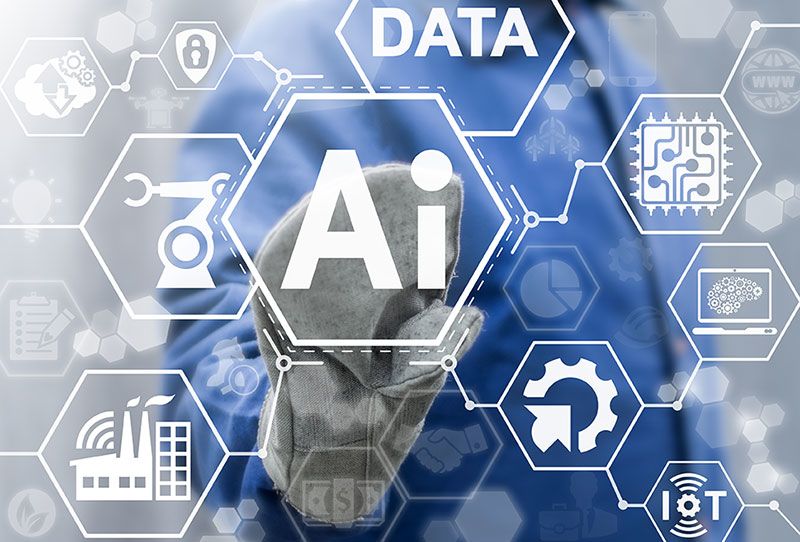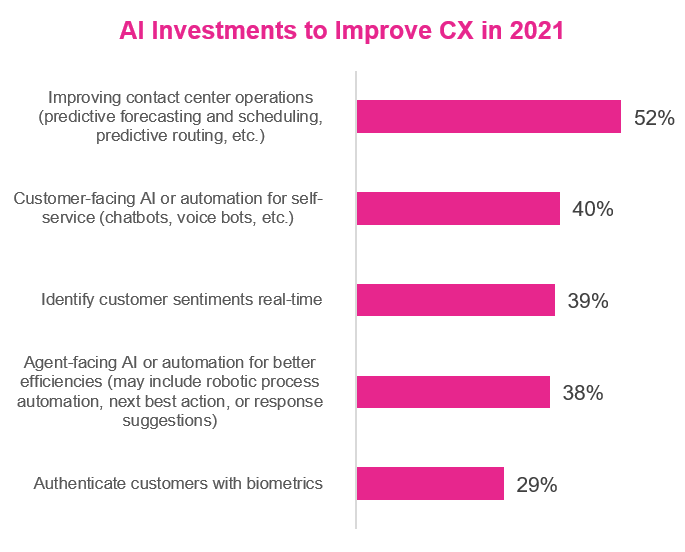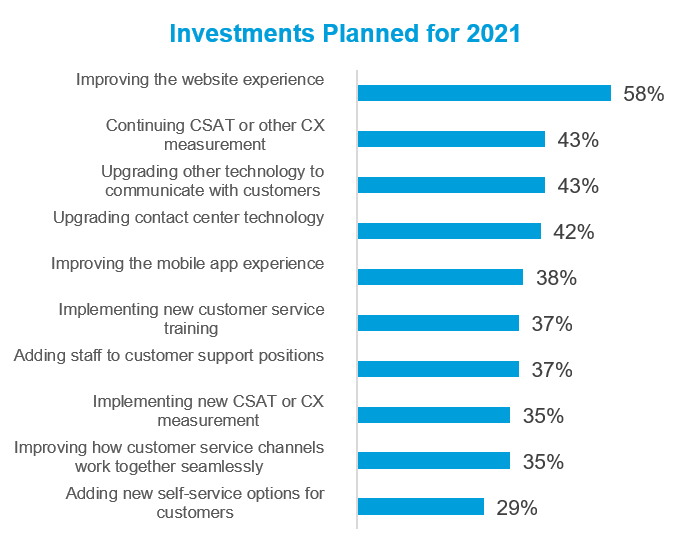The season is upon us. Not the holidays, not the early days of winter, but predictions season. This time of year presents an opportunity for our community of contact center experts to take a step back and consider this year’s trends and gauge what we can expect from customer experience in the coming months. But just as 2020 has made everything just a little different, so must we rethink this time-honored tradition. Besides, in a year defined by surprises, is it even possible to predict what could come next?
For contact centers and the professionals who bring them to life, the answer, perhaps surprisingly, is yes. One of the biggest takeaways from this past year was just how significantly it accelerated trends, in some cases overnight, that were long developing, such as the rise of the remote agent or the importance of operational agility. These provide a roadmap for leadership and staff alike to best plan for 2021 and start laying the foundation for future growth.
According to Forrester’s 2021 predictions guide Accelerating Out of the Crisis, “2021 will be the year that every company – not just the 15 percent of firms that were already digitally savvy – doubles down on technology-fueled experience, operations, products and ecosystems.” The report points out that hard-won lessons in adaptability, creativity and resilience will continue to serve companies as they navigate ongoing change.
We connected with our team of subject matter experts to get their opinions on the top issues facing the 2021 contact center and what customer experience leaders need to keep in mind as they brace for the future. Here’s what they had to say:
What kind of support, service and engagement will customers expect from businesses in 2021?
Randy Littleson, Chief Marketing Officer, NICE CXone: Personalized and prescriptive. Customers prefer digital. They want options and expect guidance on the most efficient route to resolution for a given issue. While digital and self-service will dominate, voice isn’t going away. The tricky problems require voice and considering what is going on in the world today, many customers want the empathy and connection of talking to a live human. So, while businesses should move aggressively to digital and self-service, they should not think about abandoning voice, but how these technologies work seamlessly with voice to deliver the best and most efficient customer experience.
Tim Harris, Head of Product, NICE CXone: More and more digital engagement and proactive outreach. We know that being proactive is nearly always more economical and better received. The change in the norm has allowed businesses to review their processes and tilt toward being proactive versus just waiting for customers to contact them.

What role does CX play in ensuring a business’ ability to be resilient?

Randy Littleson: Customer experience plays a more important role in resilience than ever before. Many have described this as the “experience economy,” and COVID-19 has only heightened that reality. The businesses that did best from a CX perspective during 2020 had two things in common.
- They had great business agility
- They had well formed, customer-centric CX strategies that really permeated through the company’s culture.
The ability to exercise that agility while keeping true to their brand’s promise on CX differentiated them and left others behind.
Tim Harris: This is where you have the chance to prevent or respond without the chaos reaching your customer. It is kind of like the kitchen in a restaurant. CX needs to be where the finished plate arrives not where the food is made. Customers were panicked and concerned during 2020. This provided an opportunity for businesses to again earn loyalty by performing and delivering.
How will the overall perception of Artificial Intelligence evolve?

Randy Littleson: There will be continued growth and acceptance of Artificial Intelligence (AI). I think of Artificial Intelligence and self-service similar to the early days of IVRs. If you “over rotate” and try to do too much with any of these technologies, you are likely to get burned and not deliver the experience your customers expect.
According to NICE CXone’s 2020 Customer Experience Transformation Benchmark study, 52 percent of businesses say they will be using AI and automation to improve customer Other applications for AI investments include customer-facing AI for self-service like chat bots and voice bots (40 percent), identifying real-time customer sentiment (39 percent) and agent-facing AI for better efficiency (38 percent).
Businesses will increasingly gain the experience in 2021 to get this right. There will also be a growing understanding and appreciation for AI’s value holistically throughout the contact center – not just to power bots -- but to aid agents, schedule the workforce more efficiently, automate insight analysis and power increasingly sophisticated routing.
Hadar Keren: Artificial Intelligence is finally making the transition from over-promised hype to a solution which can deliver value. Slowly moving from simple applications replacing basic touchtone IVR to more complete sets of self service, allowing consumers to complete actions without the involvement, and the associated cost, of a human agent. While affordable building blocks are being provided by the large players (e.g. Google, Amazon, IBM, Microsoft) and are allowing flourish of startups that try to capitalize on this trend, only those that achieve certain volume and size will be able to train their model in a sophisticated and value-adding way. That implies that we’ll see consolidations in this fragmented market, as well as follow up investments that will fuel further growth.
What is the state of customer experience heading into 2021 for enterprise businesses? What about for small- to medium-sized businesses?

Randy Littleson: Working at home. 2020 has been trying as we transition everyone safely home. That remains the case for many and will continue into 2021. Looking toward 2021, it is going to be about trying to get back to the operational excellence of the past within this new model and learning how to build from there. We’ll see a continued emphasis on digital as a preferred channel and more experimentation and deployment of self-service options to gain efficiencies (e.g. chatbots). Further, cloud adoption will accelerate as a must-have differentiator for greater agility – a lesson learned from COVID-19 for businesses of all sizes.
Tim Harris: We are seeing rapid adoption of cloud technology to solve the unique challenges that COVID-19 created. There is a high demand for an at-home workforce and self-service offerings that are better tailored to the current at-home reality. We are also seeing increases in the speed of launching digital initiations. More and more customer experiences are being handled across multiple channels but often starting or ending in the digital arena. For small businesses? The same holds, but we are also seeing increased pressure on these organizations to do more with less. This is causing a change in buying behavior and priorities.

What aspect of customer service do you expect will evolve and be disrupted next?
Randy Littleson: There are several, but I will focus on digital. For years we’ve been talking about digital channels, but the reality is most companies aren’t good at engaging their customers where they increasingly prefer to be engaged. I think that starts to change significantly in 2021. Organizations align and start to offer truly digital-first, omnichannel services that are exceptional and trustworthy.

How will the agent experience continue to change throughout 2021?
Tim Harris: The agent's role is becoming more challenging. As self-service continues to remove the “easily automated” tasks, the agent must deal with challenging assignments. Also, all of these channels are creating mental fatigue. Our job is to give them the right amount of guidance and assistance as they need it to help them navigate this changing environment. Deep integrations across their technology ecosystem ensure they have the best experience while providing the best experience to the consumer.
What types of CX investments will be in vogue in 2021?
G3: Work-from-home tools, alongside remote workforce management, will be huge. We’re also looking at analytics and intelligence to understand customers and their needs as they evolve. Lastly, we will see investments in heavy digital fronts, such as chat, SMS, etc. This is critical to serve customers faster, including self-service.
The NICE CXone 2020 Customer Experience Transformation Benchmark study found that contact centers are more likely to plan to invest in nearly all methods of customer service communication with 58 percent of businesses planning to improve the website experience and 43 percent upgrading technology to communicate with customers via chat, text, email, etc.
What are your predictions for the 2021 contact center? Share with us on Twitter!









